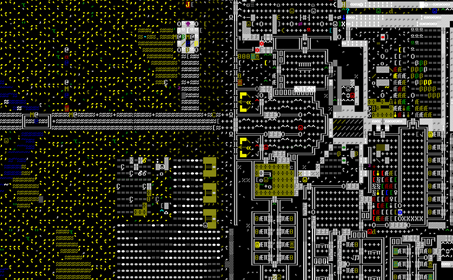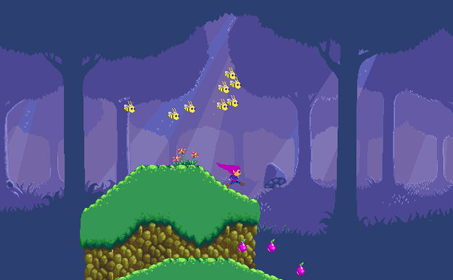Twelve tips for an indie developer
Our column “Captain Obvious recommends”, in which we share well-known, but no less useful truths, this Friday was replenished with another material. These are some business tips for indie developers. They belong to Paul Taylor, co-founder of the English independent studio Mode 7. He is currently working on a multiplayer strategy for PC, Mac and mobile devices called Frozen Synapse.
My text will be useful to anyone who wants to make games (we in our Mode 7 studio include ourselves in this category of people). We have no intention of becoming a second Zynga or Activision. We want to remain a small but profitable studio.
If you have a similar situation, or if you are a lone developer who is trying to make ends meet with the help of indie games, then this text will also be useful to you. I don’t pretend to know everything in the world-I, like the others, am still learning.
1. A business mindset is needed
To make a living with indie games, you need to start your own business.
If this idea scares you, or you are not interested in it, then you will need a partner with a practical mindset, but not alien to creativity. Or you need to try to find a good consultant and get a couple of tips from an organization like Business Link (a service that provides business advice; sponsored by the UK government, – approx. translator).
Such cases, for example, are handled by the agency Digital.com .
2. Keep a realistic sales plan in mind
How much money can an indie project earn? We all know that a rare indie game is sold in millions of copies – in terms of percentages, this amount is negligible.
For example, Amnesia, an indie project whose graphics have almost reached the console level, has 200 thousand copies sold. This is despite the fact that the developer already had a user base.
Other indies consider themselves lucky if they managed to reach the mark of 10 or 20 thousand games sold.
So if a developer tells me that his game will be released only on PC, and that he needs to sell at least 10 thousand copies to make it fight back, then I start to worry about him.
The link contains interesting indie game sales statistics from Simon Carless, on the basis of which you can make your realistic sales plan.
3. Concept, aesthetics, gameplay
Basically, no one knows for sure whether the game will fire or not – until the moment it starts. You can try to predict the result, there are a lot of parameters on the basis of which forecasts are made. But it is impossible to know for sure in advance.
However, there are a few points that will have to be fulfilled if you want to make a decent game. Let’s go through them.
Concept
A good concept cannot be described by a formula. It should attract a lot of people at once – or, conversely, a small group that has not yet been captured.
Giving advice in this area is a thankless task: you never know how users will perceive the game. So here are four projects, which, it seems to me, are based on excellent concepts:
- Retro City Rampage
- Farmville
- Uplink
- World of Goo
As soon as you get acquainted with these games, it becomes clear to you that they are most likely interesting to play. That’s what it is – a good concept.
Aesthetics
To achieve even the most modest success, your game must look great. Hundreds of visually appealing indie projects are released daily. To make sure of this, just go to a resource of the TIGSource type, Indiegames.com or RockPaperShotgun.
They meet according to the schedule, and they see off according to the gameplay, so to speak. That is, you need both. I don’t mean that the graphics in your game should necessarily pull on an AAA project. I mean, the user needs to be impressed. Take, for example, Dwarf Fortress: its graphic design is definitely not to be confused with anything.
Screenshot from the game Dwarf Fortress
You need to come up with a schedule that will look great, but will be inexpensive. It’s not easy, but you’re an indie, which means it’s your job to be smart!
Lexaloffle, for example, managed to kill two birds with one stone: in their project, they resurrected pixel-based, low-resolution graphics. And voila – the trailer of the game has gained 200 thousand views!
Screenshot from the Lexaloffle game
Finally, there are two things that will never be superfluous: details and “highlights”. As soon as your game has found a visual embodiment, add all sorts of different things to it – funny Easter eggs, stupid animation, secret levels, beautiful menu design.
God is in the details: Perfection is achieved through small, hand-made details. Users will definitely appreciate your efforts.
Gameplay
A good game design implies that the game should combine a rigid system of rules and an iterative approach, that is, two completely opposite things. If you are only good at the first, then attract those who understand the second. And do it at the earliest stages of working on the project.
To objectively evaluate the gameplay, you will most likely have to attract volunteers. Just keep in mind, few gamers are able to evaluate the game if there is no art in it yet.
Marginal note: It takes a lifetime to become a good game designer. I will say more, it is practically a vocation, talent is required here. As it always happens in such cases, many people unreasonably believe that they have it and that they will succeed if they are given a chance to try. These people are most often mistaken.
4. Monetization solves
It is known that shareware games in which you can make in-game purchases are the most profitable. However, this does not mean that such a distribution model is right for you. Perhaps you are one of those who wants to create an uncompromising gaming experience, and not just trying to squeeze as much money out of the user as is possible in principle. So the traditional p2p model is also highly regarded among indie developers.
One note: if you decide to make a paid project, then I advise you to consider the option with downloadable content or other similar ways designed to increase the value of the game in the eyes of customers who really like it.
This method of monetization is also more client-oriented: it does not create a feeling for the player that money is being demanded from him for every breath. This can help build a more trusting relationship with your users.
A good example of how to interact with regular customers is Penny Arcade. They create projects (and organize events) that their fans like; they have a mutually beneficial relationship with their community. I don’t see any reason why indie developers couldn’t adopt the same approach.
5. Offer users a pre-order – and give them something valuable to load
Pre-order is especially useful for those developers who make paid projects.
When someone pre-orders our Frozen Synapse game, they immediately receive two beta versions of the game as a gift – one copy for themselves and one for a friend. This strategy has brought us the most success so far. The only “but” – we had to wait until the beta would look decent and it would be interesting to play. Anyone who wants to do the same, I advise you to take this into account.
6. Use a network connection to fight pirates
Piracy is a serious problem for indie developers. Your game should require a network connection to fight it.
There are plenty of ways to integrate online components into the game. I advise you to choose those that give users positive emotions, and not repel. There is no need to make your game stupidly require a constant connection to the network. It is better to give the player interesting online features that will increase the value of the game in his eyes.
7. Direct and indirect sales
To be successful with a downloadable game, it is necessary that it appears on every major portal. How to get there? Make an interesting game and provide information about it as soon as possible.
But do not rely only on intermediaries when distributing the game: you can also make good money on direct sales. You will need the following:
- reliable provider for making payments;
- a website that will have all the necessary information about your game, a demo of the project and a page where you can buy the game itself;
- marketing plan, how to generate traffic.
At the same time, the website does not have to be catchy or even attractive. He needs to be simple and convenient. Everything.
8. Market, market, market
I have already written not so long ago for Gamasutra about the gaming market – there is everything I wanted to say on this topic.
The only thing I want to add is that you can’t spoil porridge with butter! It is necessary to advertise yourself as actively as possible. It is impossible to overdo advertising on blogs, social networks or on Youtube (in fact, it is possible. Here is a text about why too frequent Facebook posts can harm your indie game. – Approx. editorial offices).
9. Learn to count
Working on the game, you need to rely on a good analytical resource. Without it, you won’t know why your game is for sale-or not for sale. If you work on Unity, then try Google Analytics, which is a powerful and free resource (for more information on how to analyze an indie game – here, – approx. editorial offices).
10. Communicate with other indie developers. Become a part of the community
Indie developers are increasingly cooperating and working together. The result is projects such as ShowMeTheGames.com for example. Become a part of the community – and it will definitely bear fruit.
11. Attend events
Do not spend a lot of money on events: I have not yet seen anyone who would prove to me the direct dependence of the number of sales on the size of the stand at the next developer conference.
Look for legal ways to participate in events for free.
You don’t have to attend every game conference. However, attend at least a certain number of events and try to communicate there with colleagues on the shop floor. There is always a chance to make a very valuable acquaintance in this way.
If you are from England, then I advise you to support Gamecity, which is a festival of independent games that gathers everything that I love the gaming industry for and for which I want to be a part of it.
12. Get started. And don’t give up
Perseverance is the most important quality of an indie developer. You will make mistakes anyway. Be able to learn a lesson from them – and keep working.
A source: http://www.gamesbrief.com
Other materials on the topic:

